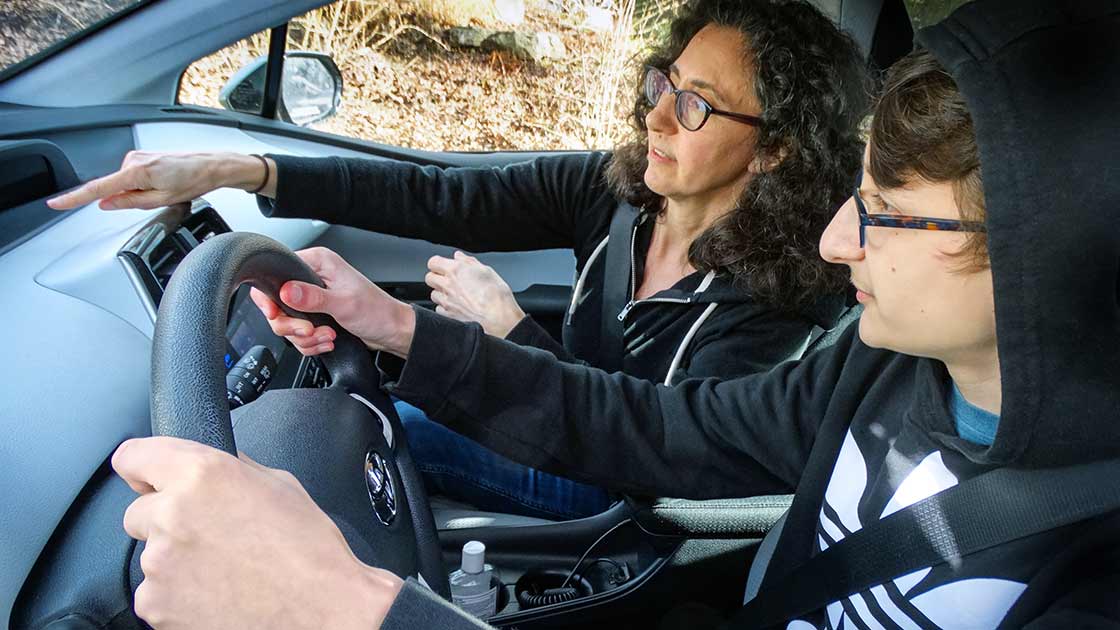Parents worry vehicle tech might prevent teens from mastering the basics
January 21, 2021

Advanced driver assistance features have the potential to improve safety for young, novice drivers, but parents have mixed opinions about how to introduce such technologies to their teenagers, a new study from the Insurance Institute for Highway Safety shows.
“Parents who have used advanced driving assistance features with their teens worry that things like blind spot monitoring or lane departure warning systems could prevent them from learning the basics of driving, but they’re also aware those same features might save them from a crash,” says IIHS Research Scientist Rebecca Weast, the lead author of the study.
Teenage drivers are 3 times as likely as those 20 or older to be involved in a fatal crash. Those deaths are often the result of single-vehicle crashes caused by speeding or other errors that cause the driver to lose control.
Because teens most often drive older, cheaper vehicles, they’re also less likely to benefit from proven crash prevention technologies like automatic emergency braking (AEB) — which is expected to be installed in less than a quarter of the vehicles on U.S. roads by 2023 despite a major push from manufacturers. But AEB and other features like blind spot monitoring systems and sensors that warn the driver when the vehicle is drifting out of its lane are becoming more and more common on the cars that their parents drive and they learn on.
To explore how parents feel about these technologies, IIHS worked with J.D. Power to conduct three focus groups. The discussions involved a total of 21 parents who had used a vehicle equipped with at least four common driver assistance features to teach their teens to drive. These common features included blind spot monitoring, forward collision warning, front or rear AEB, lane departure warning and lane departure prevention — which steers the vehicle back on course when it drifts out of its lane. While many parents said they believe these features provide some safety benefits, they were divided about when and how they should be used during the process of learning to drive.
“Those features make driving safer, but they don’t make you a safer driver,” said one parent. “Say my teen is driving in a car with all those features engaged [and] that’s what they get used to. Then they go out and buy their own car, and it’s got none of those features. That would be really scary for me.”
Overall, the parents expressed doubts about the technology more often than strong faith in its effectiveness. Some complained that the beeps and buzzes and warning lights could themselves be distracting, or that systems that momentarily take over the steering wheel to prevent lane departures could startle their teen into overreacting.
However, others were optimistic that the technologies could give fearful teens the confidence to learn. A few used the system alerts to help monitor the teen’s driving and give immediate feedback about unsafe maneuvers. AEB had already helped another parent’s teen avoid a crash. “When they’re unskilled, I think those features help a lot,” the parent said, adding it’s easy for new drivers to lose control.
Parents’ opinions were split about whether new drivers should be introduced to the driving assistance features at the beginning of the learning process or after they’d learned some of the basic skills. “I’m training my daughter to use all the technology that’s available with the car,” said a third parent, adding that young people are often more tech-savvy than older adults. “If it’s there, why not?”
The study did not include parents who had decided not to use these features at all during the learning process. However, some said they turned the features off after experimenting with them during driving practice to ensure their child didn’t use them as a crutch. These parents said they would later incorporate them into their sessions, since such technology was only going to become more common.
“More research is needed to determine what role these features should play in learning to drive and how to ensure new drivers use these features properly,” says Weast. “That’s complicated because owners of vehicles with advanced driver assistance systems often themselves don’t understand their capabilities and limitations.”